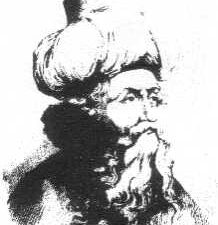Introduction
Most scholars believe that the founder of the Mu‘tazila sect was the Bas̩ran Wāṣil b. ʿAṭāʾ (d. 131/748). He was then succeeded by Amr b. ʿUbayd (d. 144/761). Wāṣil b. ʿAṭāʾ made iʿtizāl (withdrawal) from the circle of Ḥasan al-Baṣr̄i on the issue of the status of the major sinner. He argued that the major sinner was neither a believer nor a disbeliever but in an intermediate position. Due to his iʿtizāl, the name Mu’tazila was coined. Thus the key Mu’tazilī doctrine of an ‘intermediate position’ can be attributed to Wāṣil b. ʿAṭāʾ.
In addition to their novel understanding of the status of a major sinner, both Wāṣil and Amr were criticised by traditionalists for their qadariyya position on free will; a key Mu’tazila doctrine that comes under their category of adl (justice). The Qadariyya were a disparate group of theologians who emerged in the early Umayyad period and who emphasised individual free will over divine predestination. They held that man, and not Allah, was the creator of evil. This was in contradiction to the consensus of the Salaf who held that Allah was the creator of good and evil
Watt argues that at this early stage the doctrines that were to characterise this sect were still in embryonic form. In the generation following Wāṣil and Amr, the Mu’tazila divided into two schools of thought: the Bas̩ra and Baghdad branches.
The five principles
The five well-known principles of the sect were articulated by two key thinkers; Abū ’l-Hudayl (d.227/842) and Bishr b. al-Mu‘tamir (d. 210/825). These principles are:
1) al-tawḥīd;
2) al-ʿadl, (justice);
3) al-waʿd wa ’l-waʿīd (the promise and the threat, i.e. threat of eternal Hell Fire will be carried out on the major sin even he does not repent);
4) al-manzila bayna ’l-manzilatayn, (an intermediate position- i.e. the sinner is neither a Muslim, nor a Kāfir but in between) and
5) al-amr bi-’l-maʿrūf wa ’l-nahy ʿan al-munkar (to command the good and forbid the evil).
The issue of legitimate leadership
Abū-l-Hudayl, the founder of the Bas̩ra school, was strongly opposed to the Shī‘ī Imāmate concept. However, unlike Al-Aṣamm (d. 200/816 or 201/817), who was also from the Bas̩ran school, Abū ’l-Hudayl accepted the caliphate of ‘Alī. Al-Assamm, a Mu‘tazili theologian and mufassir, was staunchly anti-Shī‘ī to the extent that he did not recognise the caliphate of ‘Alī, and supported Ṭalḥa, Zubayr and Mu’āwiya in their conflict against him. He differed with fellow Mu‘tazila by rejecting al-manzila bayn al-manzilatayn, and understood al-amr bi ’l-maʿrūf wa ’l-nahy ʿan al-munkar differently from other Mu‘tazila.
The view of Bishr b. al-Mu‘tamir from the Baghdad school was closer to the Zaydī view of the Rāshidūn caliphs: Bishr considered the caliphate of Abū Bakr to be legitimate, despite the fact that he was mafḍūl (less excellent) and hence ‘Alī was superior to him. Mafḍūl is used in contradistinction to afḍal (the most excellent). Thus, although Abū Bakr and ‘Umar were ‘less excellent’ than ‘Alī, their caliphate was still valid as ‘Alī himself had pledged allegiance to them. Among his students were Ibn Abī Du’ād, who was very close to the caliph al-Ma’mūn and later appointed as chief Qāḍī under al-Mu’taṣim. [10] Ibn Abī Du’ād’s strong influence over Ma’mūn may explain the latter’s decision to appoint an ‘Ali al-Rida as his heir-apparent [11]. Ali al-Rida is considered to be the eighth Shi’i infallible Imam.
Tawheed and the Createdness of the Quran
The first interpretive principle of the Mu’tazila, on tawḥīd (monotheism), brought them into conflict with the traditionalists. According to the Mu’tazila, tawḥīd necessitated divesting God of all anthropomorphic qualities, and hence they made ta’wīl (figurative interpretation) of the attributes of God mentioned in the Quran.[12] This theological position led to the controversy of the createdness or otherwise of the Quran. According to the Mu’tazila, if the Quran was uncreated, this entailed the existence of another eternal entity alongside God; yet only God was eternal and uncreated.
In 211/827, the Caliph al-Ma’mūn adopted this belief, eventually leading to a fully-fledged inquisition (218-237/833-851) that started shortly before his death. Imam Ahmad, along with other Sunni scholars, vehemently opposed this doctrine. Despite facing imprisonment and torture, he continued to defend the Sunni belief that the Quran was the uncreated speech of Allah. The speech (Kalaam) of Allah is one of His attributes and hence is uncreated. Secondly, the Quran is part of the Kalaam of Allah. Hence it has the same attributes that the kalaam of Allah has.
However, we cannot say definitively that the caliphs embraced the Mu’tazila theology wholeheartedly, as one of Ma’mūn’s advisors, Bishr al-Marīsī (d. 218/833), had a determinist view of free will, which was the diametric opposite of the Mu’tazila view of free will.
The inquisition finally ended upon the ascension of the caliph al-Mutawakkil. Unlike the Shī‘as and traditionalist Sunnīs, the Mu’tazila never had a mass following. The failure of the inquisition resulted in political oblivion for the group, although their ideas were later absorbed into Ithnā ‘Ashariyya, Zaydī and Māturīdī thought. The only place where Mu’tazilism survived (outside Shī‘īsm) was the region of Khwārazm. The famous Mu’tazili exegete al-Zamakhsharī was from this region.
The status of the Companions
Although the probity of the Companions was a fundamental belief that distinguished Sunnīsm from Shī‘īsm, not all of the Mu’tazila concurred with the belief in the probity of the Companions, and this is one of the many reasons why they were excluded from the fold of ahl-al Sunna. One of the scholars who excluded the Mu’tazila from ahl al-sunna is Muḥammad ibn Aḥmad al-Safārīnī (d.1188). He states: “Ahl al-Sunna consists of three groups: the textualists (Atharīs), whose Imām is Aḥmad ibn Ḥanbal; the ‘Ashʿarīs, whose Imām is Abū al-Ḥasan al-Ashʿarī; and the Māturīdīs, whose Imām is Abū Manṣūr al-Māturīdī.”
The Baghdadi Mu‘tazilī, Abū Ja‘far al-Iskāfī (d240 / 854-5), held that ‘Alī was superior to all the Companions and questioned some of the virtues attributed to Abū Bakr, for example his generosity. Brown, in explaining the three Sunnī theological schools, excludes the Mu‘tazila from Sunnīsm mentioning only the ‘Ashʿarīs, the Māturīdīs and the ahl al-h̩adīth. Incorrectly, he argues that the creed of the ‘Ash‘arīs ‘evolved’ from the ‘original’ ahl al-h̩adīth creed.
References
Ess, J. Van, “Ḳadariyya”, in: Encyclopaedia of Islam, Second Edition Farhad Daftary, A history of Shi’i Islam, (2013).
Gimaret, D., “Muʿtazila”, in: Encyclopaedia of Islam, Second Edition.
Nimrod Hurvitz, The Formation of Hanbalism: Piety into Power, (Routledge, 2012),
Richard C Martin, Mark Woodward, and Dwi S Atmaja, Defenders of Reason in Islam: Mu’tazililism from Medieval School to Modern Symbol, (Oneworld Publications, 2016),
Sabine Schmidtke, The Oxford Handbook of Islamic Theology, (Oxford University Press, 2015),
Gimaret, D., “Muʿtazila”, in: Encyclopaedia of Islam, Second Edition,
Van Ess, Josef, “al-Aṣamm”, in: Encyclopaedia of Islam, Second Edition.
W. Montgomery Watt. The Formative Period of Islamic Thought (1988)
Zaman, Muhammad Qasim. ‘Ma’mum, Al’ in Encyclopedia of Islam and the Muslim World, ed. by Rich Martin (Macmillan Library Reference, 2003)





